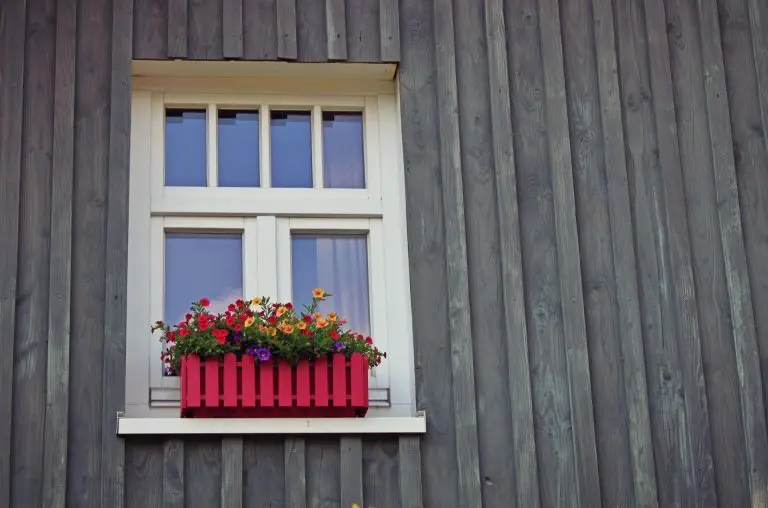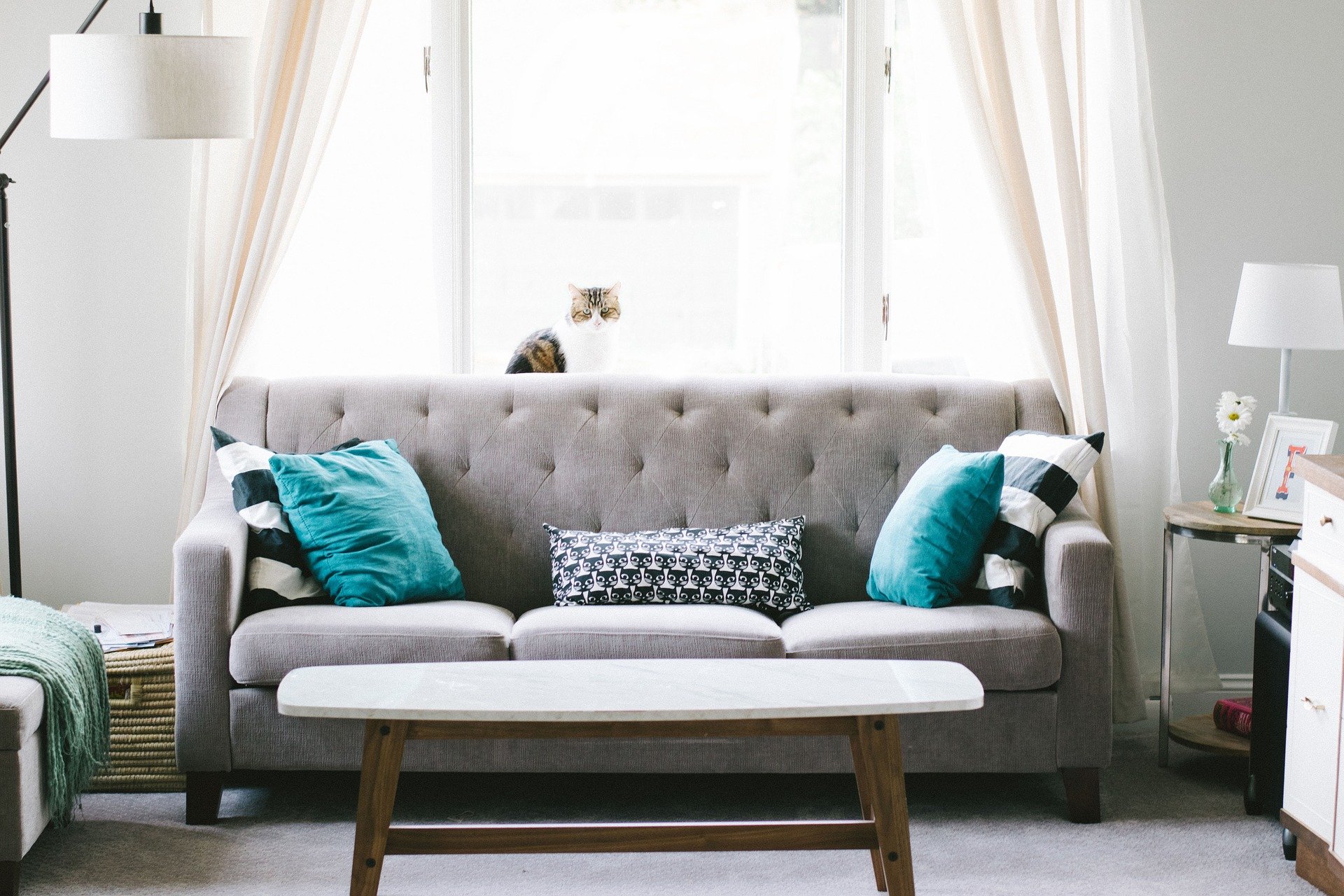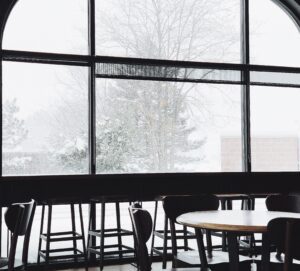Whether you’re tired of the decor in your house or need some low-cost ideas to make it feel more homely, we’ve got some home improvement DIY ideas to help you out. From free and simple fixes like clearing out to converting attic space and updating security systems, there’s plenty you can do to give your home the refresh it deserves.
Cheap home improvement hacks if you can’t afford to redecorate
Home modernisation doesn’t have to cost a fortune. In fact, there are lots of low-cost ways to improve your home without taking on huge renovation work, so start by giving it a deep clean.
1. Have a good old-fashioned clean-out
Set aside a weekend to declutter your home, tackling each room by deciding what to keep, donate, upcycle, or throw away. Letting go of unnecessary items will reduce stress and make cleaning quicker and more enjoyable. With less clutter, your home will be easier to maintain, giving you more time to relax and appreciate your space.
2. Clean up any paths or paving
Use a pressure washer to clean large areas and remove dirt and moss to quickly and easily improve your home’s exterior. In smaller spaces, a scrubbing brush with a specially formulated outdoor paving cleaner will help make the surface sparkling clean and prevent mould growth. Use weed killer on any plants growing up through paving cracks or dig them up by the root.
3. Tidy up greenery
A neat and tidy garden can be a lovely place to relax in the warmer months. Make sure to trim any shrubbery or bushes, mow long grass and pull weeds. Sure, you can hire a gardener — but with a pair of shears, some gardening gloves and determination, it’ll be much cheaper.
4. Clean the gutters
Over time, gutters can fill with debris like leaves, shingle granules, bird feathers and more, so it’s important to make sure that you regularly clean your gutters — once at the end of spring and once towards the end of autumn as a minimum. Once you’ve dislodged all of the debris from your gutters, use a garden hose to expel the remaining waste.
5. Get your glass gleaming
Ensure your windows are gleaming by giving them a proper clean. Clean windows look attractive outside and flood your home with natural light. A sponge and fairy cleaning liquid is the easiest way to clean the windows you can reach. For more effective cleaning on higher-up windows, professional tools will be able to get the job done and leave a sparkling finish.
6.Use walnuts to remove scratches on wooden furniture
An ingenious hack for those looking to freshen up their furniture. The natural oils of a walnut penetrate the wood and restore the blemishes so use the innards to gently remove marks and scratches.

7. Repair any annoying snags
How many times have you said you would get around to fixing that dripping tap or repairing the broken drawer? Getting these seemingly small repairs sorted can ease your mind of extra worry. If you have repairs that need an expert touch, such as cloudy or misty windows, or a toilet that’s flush isn’t as powerful as it used to be, there’s no harm in calling in the experts.
8. Try your hand at upcycling
Upcycling is a great way to put a creative spin on your home. Think about whether the furniture can be sanded down and painted, perhaps even add new knobs or handles, and maybe even think about utilising them as outdoor furniture. An old side table can make a great drinks holder for those summer barbecues, and bookcases can be used as planters.
9. Accessorise, if redecorating isn’t an option
Accessorising is a budget-friendly way to enhance your home’s charm without a full makeover. Simple additions like rugs can add colour and depth, fairy lights create a peaceful ambience, scatter cushions bring pops of colour and house plants can improve our wellbeing which makes a big difference.
Outside, potted plants, a fun doormat, or a small sculpture can boost curb appeal, while unique artwork from new artists can add personality to your walls without costing a fortune.
10. Paint your front door in a new colour
If you have a wooden door, a lick of paint can brighten up the space. Complement the style of the building with a colour that enhances the colour of the bricks. For a more coordinated look, match your garage door, front porch and gate.
For homes with uPVC doors, give your front door a new lease of life with a specialist cleaner to remove stubborn stains and improve wear and tear from weather damage.
11. Dress your windows properly
Updating worn window dressings can be a great way to refresh an old, outdated style. Light or natural-toned curtains let natural light shine through and have a chic appearance from the outside. You can also add some simple decor, like photo frames, ornaments, plants and flowers, onto your sills for a touch of warmth.

12. Update your hardware
Updating small items can lift a room and improve the look of your home from the outside. Using vintage knobs, such as ceramic, glass, or wood, can instantly transform an older piece of furniture. Meanwhile, a new door number, knocker or letter box can instantly update your home and reflect your personality.
13. Half paint walls to create height
Painting half your walls is cheap and creates the illusion of height which is perfect for those smaller rooms. Keep darker colours to the bottom of the walls and use a magnolia or white to blend in with the ceiling.
14. Add towel rails to your bathroom door
If you’re struggling for space in your bathroom or want to keep damp towels out of the way, install towel rails to the back of the door. This is a cost-effective and space-saving way to hang and dry towels, instead of fitting a heated towel rail.
15. Use felt pads on your furniture legs to stop scrapes
Simple, but effective. To preserve the life span of both your flooring and your furniture, use felt pads on the feet of your chairs or tables to stop any unnecessary damage.
16. Install shelves towards the top of your walls
Cupboards and bookcases can often take up unnecessary space, so why not fix sturdy shelving towards the top of your walls? This allows you to store books, without taking up floor space.
17. Use drawer organisers
Instead of bundling everything into a drawer, use dividers and organisers to separate your possessions. You will save on space and time because your items are easy to locate.
Home modernisation projects if you’ve got a bit more to spend
Sometimes a fresh coat of paint isn’t enough, so it might be time to take on a room or house renovation project. This could include anything from updating your security system to seeking planning permission and renovating entire rooms. Whatever it is, these DIY projects can bring a new lease of life to your home.
18. Change or upgrade your furniture
Once you’ve decluttered, you can have some fun with your home. Simply moving a side table or repositioning your sofa can change the whole look of a room while moving a lamp can add depth and size.
If you do have more budget, think about investing in fitted wardrobes. This can free up space you didn’t know you had, and provide more storage for those decluttered items. Choosing furniture with clean lines and minimalistic designs can also contribute to a more contemporary look.

19. Make eco-friendly upgrades
Curating an eco-friendly home is the first step towards modernisation. Replacing traditional light bulbs with energy-saving LED alternatives and opting for energy-efficient appliances can save money whilst reducing your carbon footprint. For bigger, eco-friendly changes to your home, effective insulation can make a more noticeable impact.
20. Choose ‘Smart’ appliances
Introduce a smart home system that integrates devices and appliances, allowing you to control them from your smartphone. Smart home appliances and apps can manage and optimise your home by setting timers around your daily routines. Automated lighting, heating, and security make everyday tasks seamless whilst conserving energy.
21. Let there be light
Create an illusion of space and breathe life into otherwise dull areas by ensuring your windows are clean and clutter-free. Consider installing larger Velux windows to allow more light in. Or, install fixtures that allow greater control over how much sunlight enters the home.
A light fixture by your front door adds extra security and gives your home a welcome glow in the evenings. Choose a design that complements your building. Classic, vintage styles look stunning on older properties, while more modern designs like solar lights or lanterns are a nice touch for newer homes.
22. Utilise your stairs effectively for storage
Staircases can take up a lot of space, but that doesn’t mean you can’t benefit from them. Install an under-stair cubby for coats and shoes, a modern under-stair storage solution to maximise space or even create a hideaway for reading.
23. Turn your garden shed into a practical space
Is your house getting too small for your family? Utilise garden space to create another room. Whether you want an outdoor office or a kids’ playroom, it’s a quick and easy way to produce more space.
24. Convert your attic into a guest room
Not so much of a hack, but converting your loft can create more space in your home without having to move. Adding an extra bedroom or chill-out area could even increase the price of your home.
25. Upgrade security
Enhance security by ensuring your windows and doors are stable before adding gadgets like motion sensor lights, video doorbells, and alarms. Robust external doors and double-glazed windows can protect against intruders and provide insulation. However, even double glazing isn’t foolproof, so regularly check for damaged seals, cracks, or weak spots, and ensure locks, handles, and hinges are in good condition to prevent easy tampering.

As well as making your home more secure, double-glazing windows can be a game-changer. Saving on heating costs by reducing heat loss in winter and keeping your home cooler in the summer. Quality double glazing also insulates against noise pollution, making your space quieter and more peaceful.
If you have failed double glazing that’s ruining your home, whether in a standalone window, double glazed door or conservatory, contact your local Cloudy2Clear branch today for a free quote.
 After the double glazing boom of the 1970s, double glazed windows quickly became a commonplace feature within modern homes. Today, it’s only natural that the homeowners that can afford to do so are looking to upgrade their windows beyond standard. The next logical step in upgrading from double glazing is to have triple glazed windows.
After the double glazing boom of the 1970s, double glazed windows quickly became a commonplace feature within modern homes. Today, it’s only natural that the homeowners that can afford to do so are looking to upgrade their windows beyond standard. The next logical step in upgrading from double glazing is to have triple glazed windows. eowners. So, climate and cost go hand in hand when considering whether triple glazed windows are worth it. Those countries that have adopted triple glazed windows as standard are also more likely to have more affordable installation options. Scandinavia now uses triple glazing as standard, as consistently cold weather conditions justify the cost of installation and can save more money.
eowners. So, climate and cost go hand in hand when considering whether triple glazed windows are worth it. Those countries that have adopted triple glazed windows as standard are also more likely to have more affordable installation options. Scandinavia now uses triple glazing as standard, as consistently cold weather conditions justify the cost of installation and can save more money.


